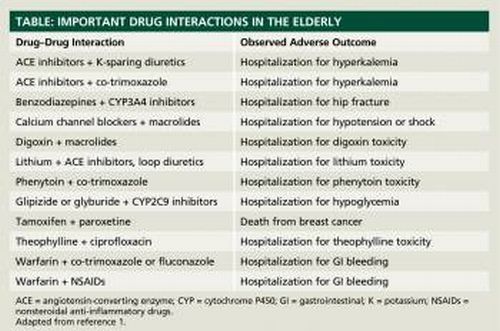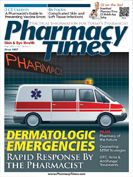Which Drug Interactions Matter in Older Adults?
Polypharmacy is often a factor in the adverse events that elders experience.

John R. Horn, PharmD, FCCP

Philip D. Hansten, PharmD
Polypharmacy is often a factor in the adverse events that elders experience.
Conventional wisdom has it that the elderly are at greater risk for adverse drug interactions, and the published evidence supports this view. Older patients take more medications and experience physiologic changes that may affect drug disposition, making them potentially more susceptible to the adverse outcomes from drug interactions.
Over the past decade or so, we have also accumulated some useful data on which specific drug interactions increase the risk of serious reactions in older patients. In a recent paper, Hines and Murphy from the University of Arizona reviewed population-based studies over the past 10 years, and discussed those that detected serious adverse outcomes due to particular drug interactions.1 The Table lists the interactions found to result in either increased risk of hospitalization or death.

It is important to remember that the interactions in the Table are the ones that were chosen for study, and other related interactions involving these drugs are also likely to increase the risk of serious adverse outcomes. For example, angiotensin receptor blockers may also increase the risk of hyperkalemia when combined with potassium- sparing diuretics or co-trimoxazole; combining calcium-channel blockers with cytochrome P450 (CYP) 3A4 inhibitors other than macrolides may increase the risk of hypotension or shock; digoxin toxicity may occur with concurrent use of many P-glycoprotein inhibitors other than macrolides; and phenytoin toxicity can be produced by CYP2C9 inhibitors other than co-trimoxazole.
Clinical evidence also suggests that a number of other oral antidiabetic agents are metabolized by CYP2C9 and CYP3A4, and hypoglycemia may occur when inhibitors of these isozymes are given concurrently; CYP2D6 inhibitors other than paroxetine may inhibit the efficacy of tamoxifen in breast cancer; CYP1A2 inhibitors other than ciprofloxacin can cause theophylline toxicity; and any CYP2C9 inhibitor would be expected to increase the anticoagulant response to warfarin.
Moreover, the elderly may take many other drugs that have substantial risk of drug interactions, especially psychotherapeutic drugs, but also drugs such as colchicine, statins, drugs for Parkinson’s disease, cholinesterase inhibitors for Alzheimer’s disease, and nonsteroidal anti-inflammatory drugs.
The vast majority of publications on drug—drug interactions are either case reports or pharmacokinetic studies in healthy subjects. Such data provide evidence that a drug interaction exists, but seldom give us information on how often adverse consequences occur or how severe they are likely to be. The value of the population- based studies discussed above is that they help us determine which drug interactions actually can result in severe adverse consequences, and give us some idea of the incidence of the adverse outcomes.
Drs. Horn and Hansten are both professors of pharmacy at the University of Washington School of Pharmacy. For an electronic version of this article, including references if any, visit www.hanstenandhorn.com.
References
1. Hines LE, Murphy JE. Potentially harmful drug-drug interactions in the elderly: a review. Am J Geriatr Pharmacother. 2011;9:364-377.

